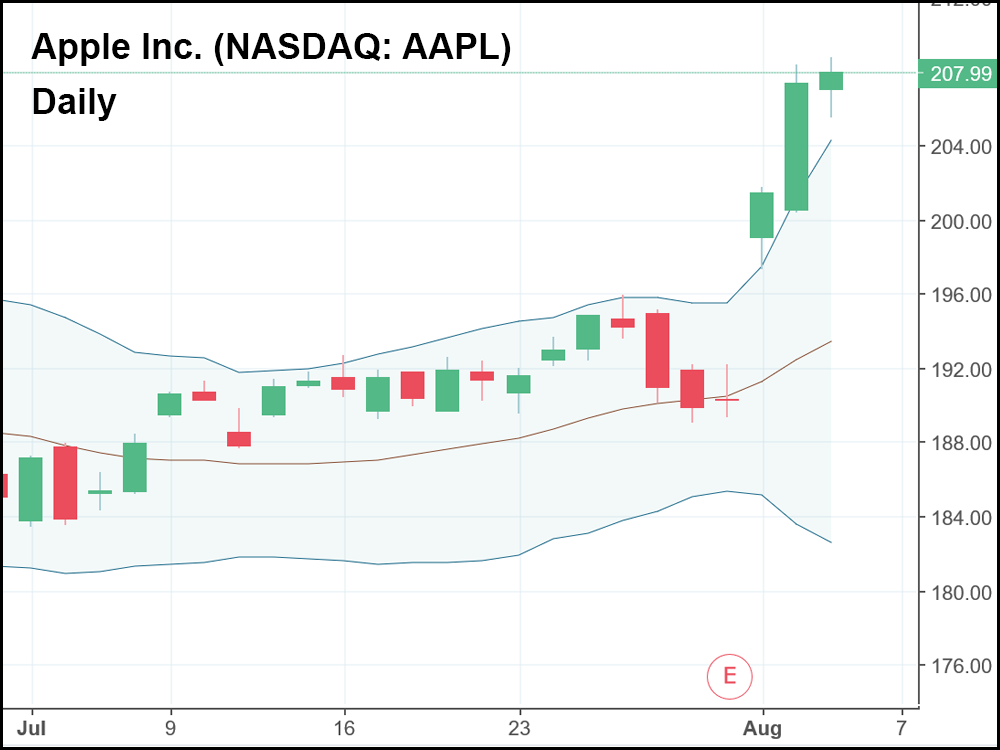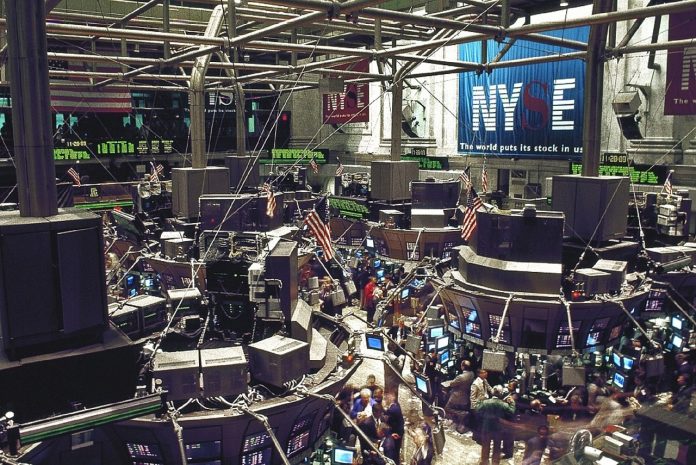On July 31st, investors waited with great anticipation for Tim Cook to announce the results of Apple’s Q3 sales in an after-hours earnings call. The news was better than expected. It was the best June quarter revenue and earnings ever recorded, carried by the performance of iPhones, services and wearables. A record 53.3 billion in revenue was reported by Cook, a Q3 record, and an increase of 17% over 2017.
This was bear slaying news. Apple stock soared during after hours, and then kept going the next day. By August 2nd, the stock had hit 1 trillion in market cap, the first company stock to do so—ever. That same day, it single handedly propped up flagging tech stocks (one social network in particular comes to mind) and managed to dig the Dow Jones out from a 240 point hole it had dug itself earlier that day.
For investors who bought into Apple earlier this year or even earlier, it was a Christmas miracle in July, compliments of jolly ol’ Appleclause. The stock has been up over 10% since July 31st, and people are still in “buy-the-dip” mode.
But for new investors who were just about ready to jump into Apple, this most recent fear of missing out (FOMO) buy-in is a summertime Grinch giving you the stink eye. Yes, that’s a contrarian approach to many other experts urging you to buy, buy, buy. But it’s an approach you should be aware of, and it may save you some serious pain in the not-too-distant future.
New Investors: Don’t Take a Bite Out of This Apple
Sometimes, it pays to take the contrarian approach to stocks. And I feel this is one of those times. Now is not the time to buy Apple, for two reasons in particular:
- It’s rarely a good idea to buy at new highs. Just ask those late investors of Facebook who ate a 20% loss in a matter of minutes.
- It’s also very clear that Apple is dangerously overbought and could be preparing for a drop down or at the very least significant sideways action.
But how do you know when a stock is truly overbought? Well, I’ll tell you. You consult your Bollinger Bands!

Bollinger bands are an essential TA tool for identifying overbought and oversold stocks. Created by John Bollinger in the 80s, this indicator helps traders identify a range of likely highs and lows by linking two elastic “bands” above and below the 20 day Moving Average.
In this image, you can clearly see Apple burst out of the uppermost band, which indicates extreme overbought conditions. Under the circumstances, there’s likely to be immense pressure on Apple stock to maintain these highs. Buying into such overbought conditions is playing into the hands of short sellers who love to take advantage of bullish greed.
I’ll leave you with one more piece of sage advice.
We’re now in the longest running bull market in history. And judging from how the S&P is acting, new all-time-highs are around the corner. All the same, it pays to be wary as we enter another phase of market euphoria. Keep those stop losses tight, and don’t FOMO buy into Apple at the highs!








